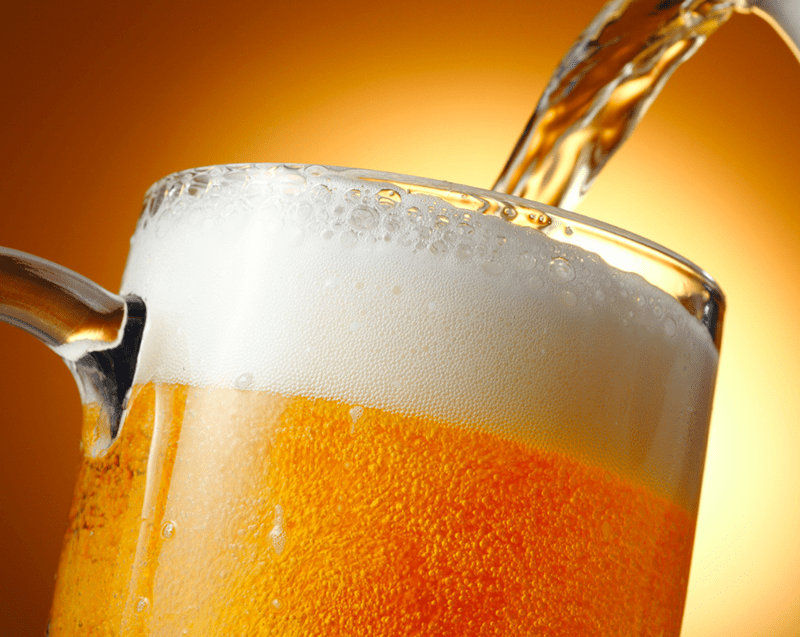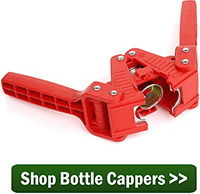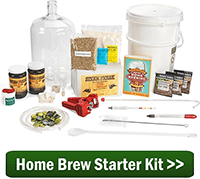 When it comes to carbonating homebrew, not all things are the same… regardless if you bottling in bottles or in kegs. Belgian ales and hefeweizens are notorious for being bubbly and effervescent; cask conditioned English ales are sometimes called “flat” by those who aren’t familiar with their low carbonation levels.
When it comes to carbonating homebrew, not all things are the same… regardless if you bottling in bottles or in kegs. Belgian ales and hefeweizens are notorious for being bubbly and effervescent; cask conditioned English ales are sometimes called “flat” by those who aren’t familiar with their low carbonation levels.
While beginning homebrewers will get by with the standard one-size-fits-all method of using ¾ cup of priming sugar for every batch of beer, accuracy demands some adjustments when carbonating their homebrew. Besides, you don’t want to over-carbonate and end up with bottle bombs!
Homebrewers who prime their beer with corn sugar before putting it in beer bottles obtain their carbonation by giving yeast additional food to convert into carbon dioxide. Homebrewers with draft systems carbonate by forcing carbon dioxide pressure against their beer, which eventually goes into suspension. In both cases, temperature must be taken into account. This is because liquids at low temperatures retain carbon dioxide more than warmer liquids do.
Carbonation is measured in “volumes CO2.” English ales may be as low as 1.5; German Wheat Beers can reach as high as 4.5. For most of the beers I brew, I aim for 2.2-2.5 vols CO2. Beers in excess of 3.0 vols CO2 may show some issues when opening bottles and pouring.
To accurately carbonate your homebrew, first determine the base style and the appropriate carbonation level.
Style Volumes of CO2
American ales 2.2–3.0
British ales 1.5–2.2
German weizens 2.8–5.1
Belgian ales 2.0–4.5
European lagers 2.4–2.6
American lagers 2.5–2.8
 Next, your method for will vary depending on whether you are carbonating homebrew in bottles or carbonating homebrew in kegs.
Next, your method for will vary depending on whether you are carbonating homebrew in bottles or carbonating homebrew in kegs.
If Carbonating Homebrew In Bottles…![]()
If bottling, you will need to determine the amount of priming sugar to mix with your batch of beer. After determining your target carbonation level, figure out the amount of residual carbon dioxide in the beer and subtract it from the target carbonation level. Use this number to determine the amount of priming sugar or DME needed to reach the target carbonation.
The Brewer’s Friend Priming Calculator helps immensely with these calculations. A digital scale will help you weight out the precise amount of priming sugar or DME you need.
If Carbonating Homebrew in Kegs…![]()
 If kegging and force carbonating, the amount of carbonation you get depends on the level of CO2 pressure on the beer and the beer’s temperature. A chart like this one will help you figure out the amount of pressure you need. (You may want to print out a copy for your home brewery.) Brewers Friend also has a Keg Carbonation Calculator.
If kegging and force carbonating, the amount of carbonation you get depends on the level of CO2 pressure on the beer and the beer’s temperature. A chart like this one will help you figure out the amount of pressure you need. (You may want to print out a copy for your home brewery.) Brewers Friend also has a Keg Carbonation Calculator.
Once you’ve figured out how much pressure you need, apply the pressure for about three days, and then turn it down to about 6-8 psi to serve.
Do you bottle or keg? When carbonating homebrew, how do you make sure your CO2 is spot on?
—–
David Ackley is a beer writer, brewer, and self-described “craft beer crusader.” He holds a General Certificate in Brewing from the Institute of Brewing and Distilling and is founder and editor of the Local Beer Blog.
